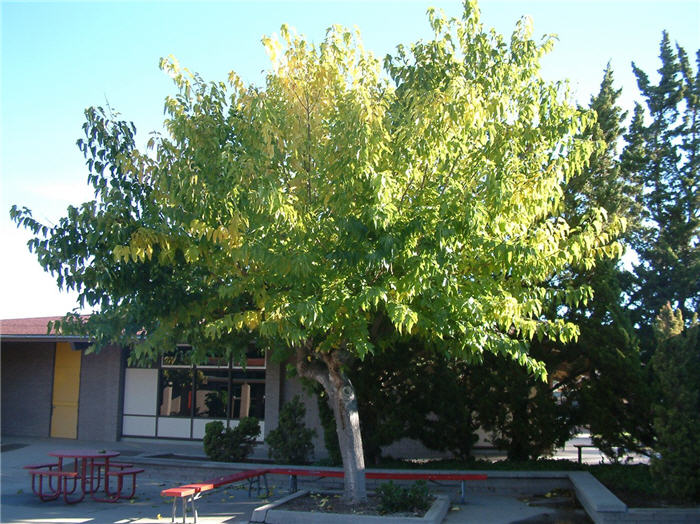| Botanical Name: Morus alba | |
| Common Name: White Mulberry |

-
Anatomy
-
Culture
-
Design
Plant Type
Tree
Height Range
25-40'
Flower Color
Green, Yellow
Flower Season
Spring
Leaf Color
Green
Bark Color
Brown
Fruit Color
Red, White
Fruit Season
Summer
Sun
Full, Half
Water
Medium
Growth Rate
Fast
Soil Type
Sandy, Clay, Loam, Rocky, Unparticular
Soil Condition
Average, Rich, Poor, Well-drained, Dry
Soil pH
Acid, Neutral
Adverse Factors
Invasive, Messy
Design Styles
Formal
Accenting Features
n/a
Seasonal Interest
Summer
Location Uses
Background
Special Uses
Shade Tree
Attracts Wildlife
Birds, Wildlife
Information by: Stephanie Duer
Photographer: Steve Mullany
Photographer: Steve Mullany
-
Description
-
Notes
This deciduous tree is extremely dense, with a boldly branched, round-topped form. Large, deeply lobed leaves are leathery, and in a mild fall will have a yellow color; otherwise, they turn brown with the first frost. Very dense shade. Small yellowish-green flowers in drooping catkins bloom in spring (March-April). Fertilized flowers on female trees are followed by sweet, edible blackberry-like fruits (cylindrical drupes to 1†long) that mature in June. Fruits ripen to white or pink, but sometimes to darker reds or purple-blacks. Fruits are loved by birds. Rapid grower to 30 to 35 feet tall and wide. There are non-fruiting cultivars available.
Grow in rich, well-drained soils in full sun to part shade. Prune in late fall or winter to avoid bleeding. Tolerates heat, drought, and a somewhat wide range of soils, including alkaline ones. Shallow rooted, so it can be difficult to get anything to grow underneath. The fruit is very tasty, but it can also be messy, so you are now forewarned.